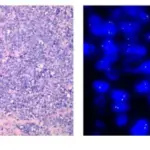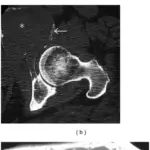Giant cell tumors are benign, aggressive tumors typically found in the epiphysis of long bones, most commonly at the distal femur and proximal tibia.
What is the Pathology of a Giant Cell Tumor?
The pathology of a giant cell tumor is:
-Etiology: The cause of giant cell tumors is not fully understood yet.
-Genes involved: G34W mutation of H3F3A gene.
-Pathogenesis: The sequence of events that lead to a giant cell tumor is the metastatic lesions often noted to have alterations in c-Myc oncogene or p53.
-Histology: The histology associated with giant cell tumors shows highly cellular lesions composed of a large number of nonneoplastic osteoclast-like giant cells, between which mononuclear neoplastic cells are embedded.
How does Giant Cell Tumor Present?
Patients with giant cell tumors typically affect both males and females at 35 years of age. The symptoms, features, and clinical findings associated with giant cell tumors include pain and limited range of motion caused by the tumor’s proximity to the joint space. Swelling may occur, as well, if the tumor has been growing for a long time.
How is a Giant Cell Tumor Diagnosed?
Giant cell tumor diagnosis is suggested by X-ray, CT scan, and MRI.
How is Giant Cell Tumor Treated?
Giant cell tumor is treated by curettage and high-speed drilling with local adjuvants.
What is the Prognosis of a Giant Cell Tumor?
The prognosis of giant cell tumors is fair.



